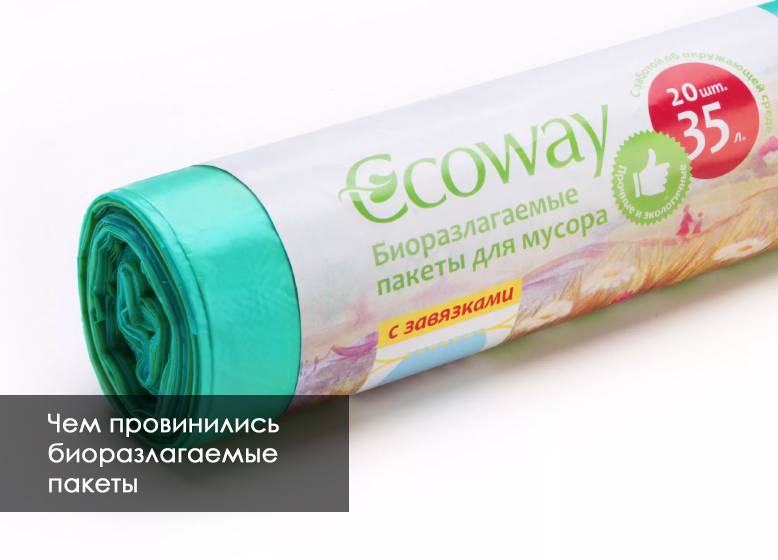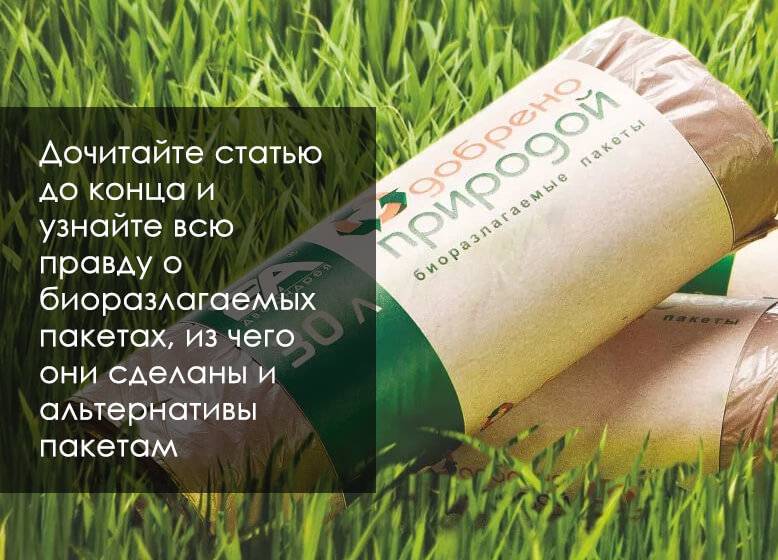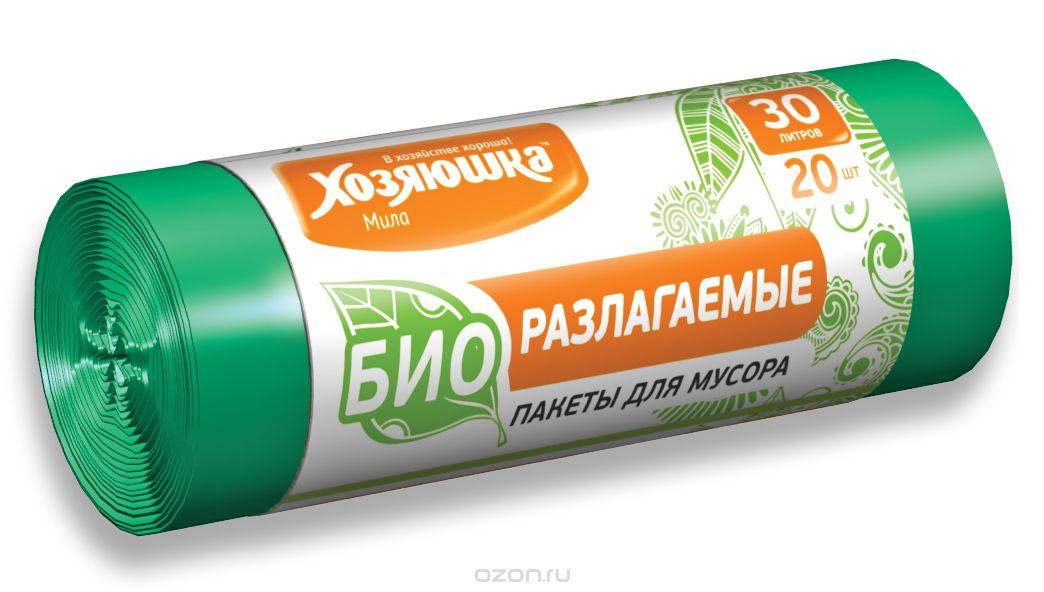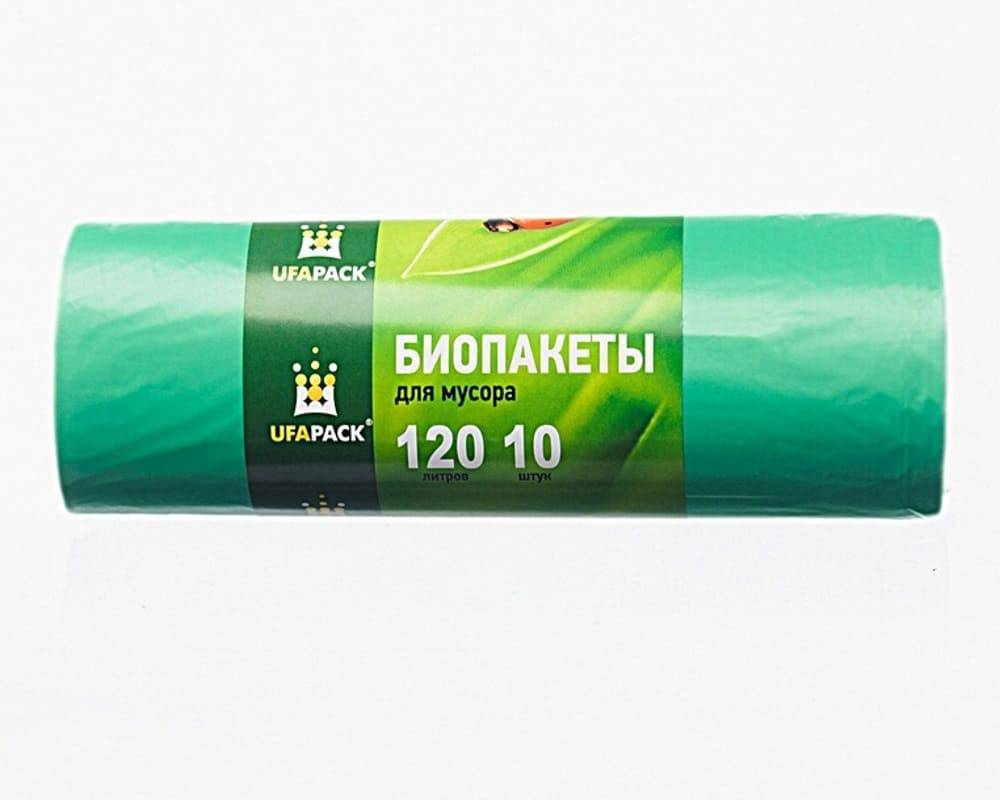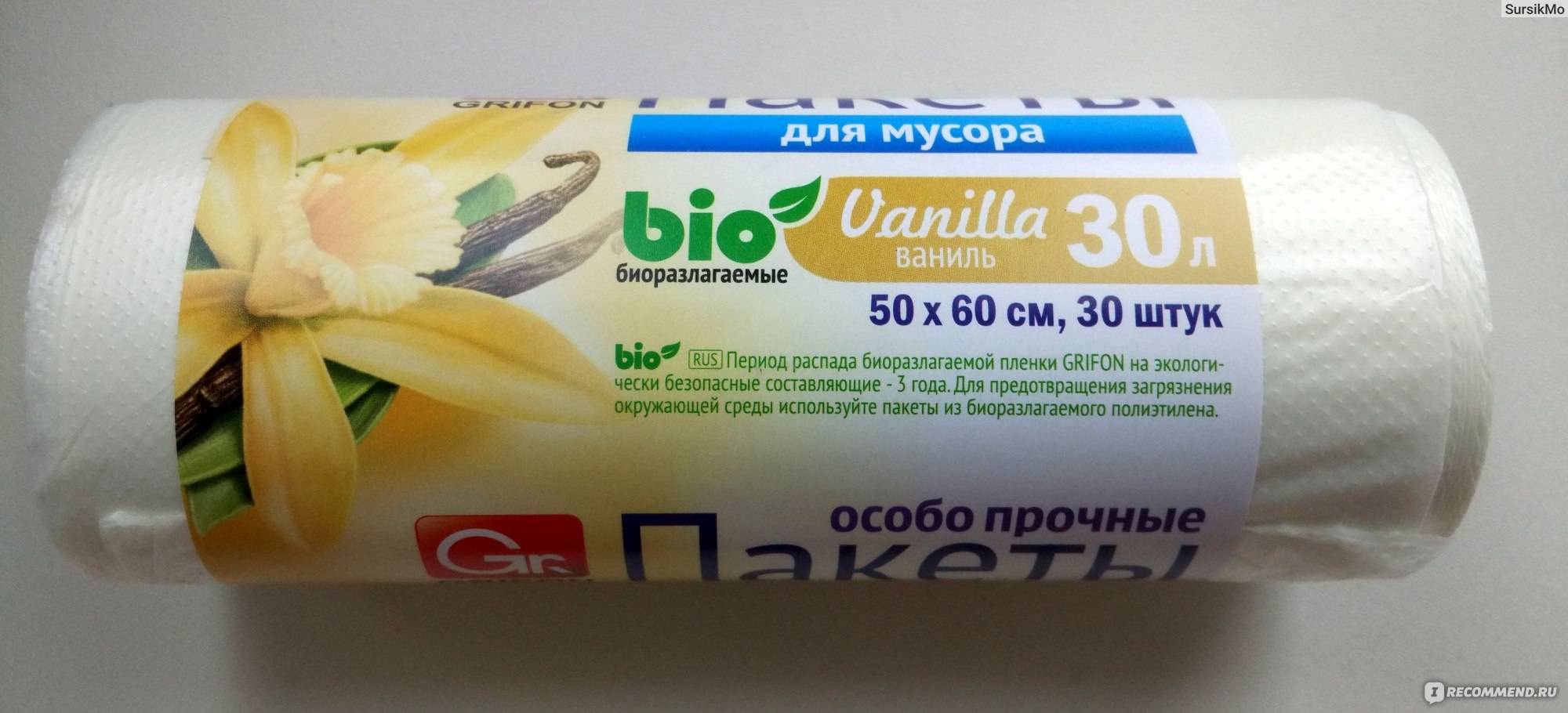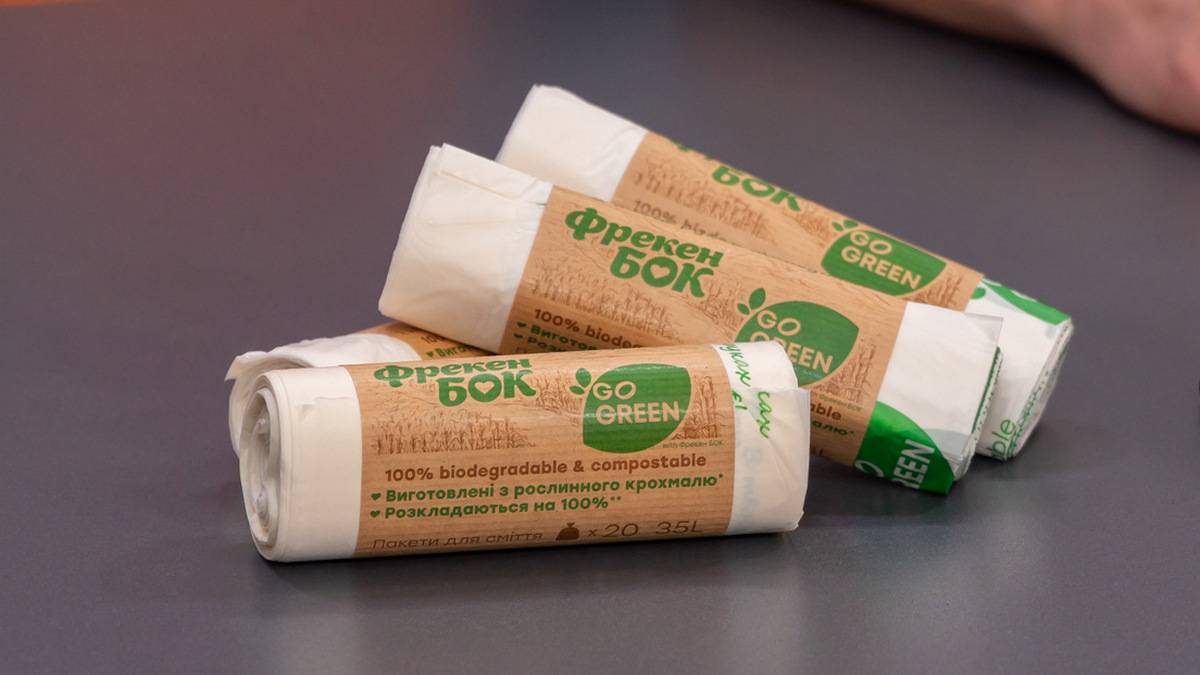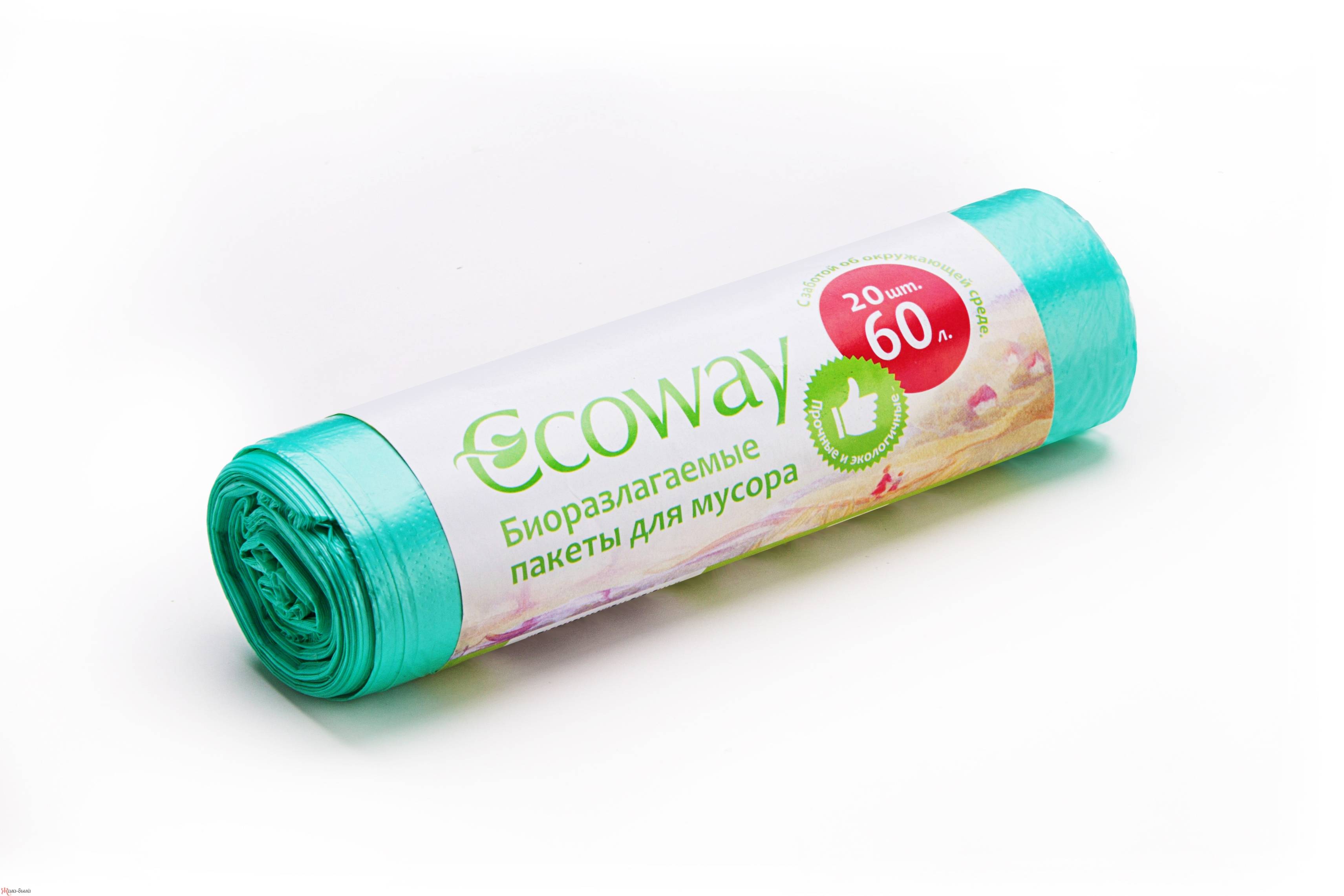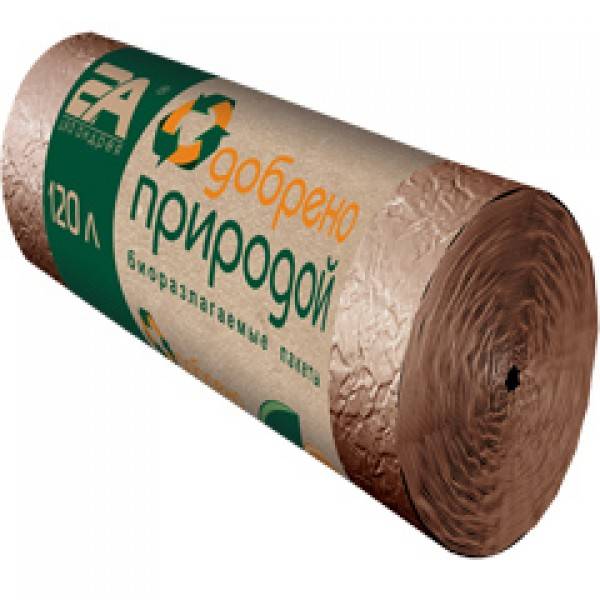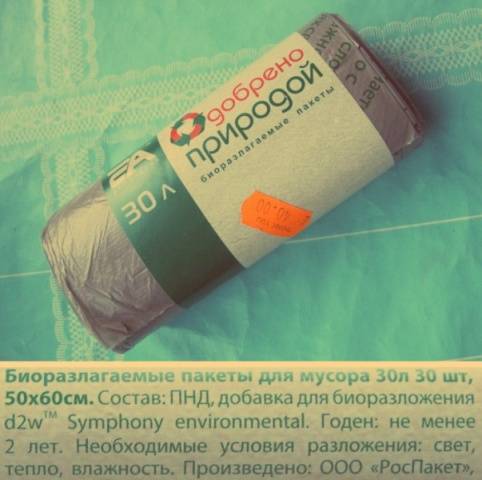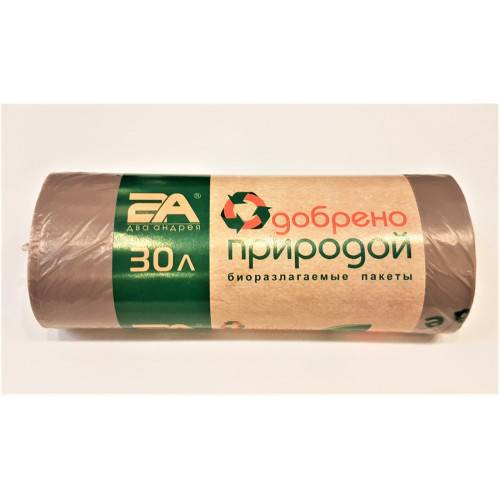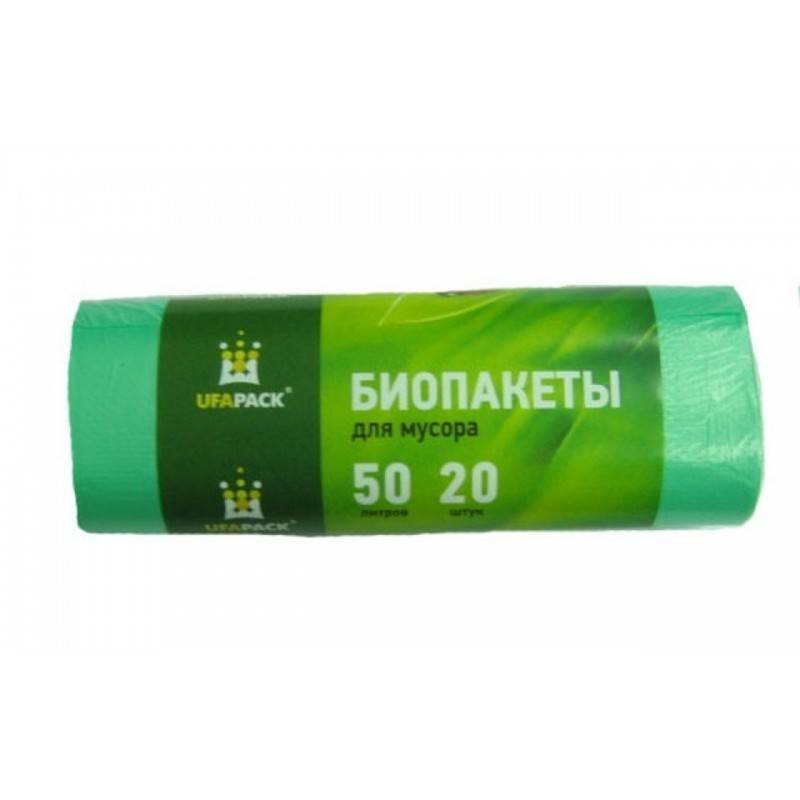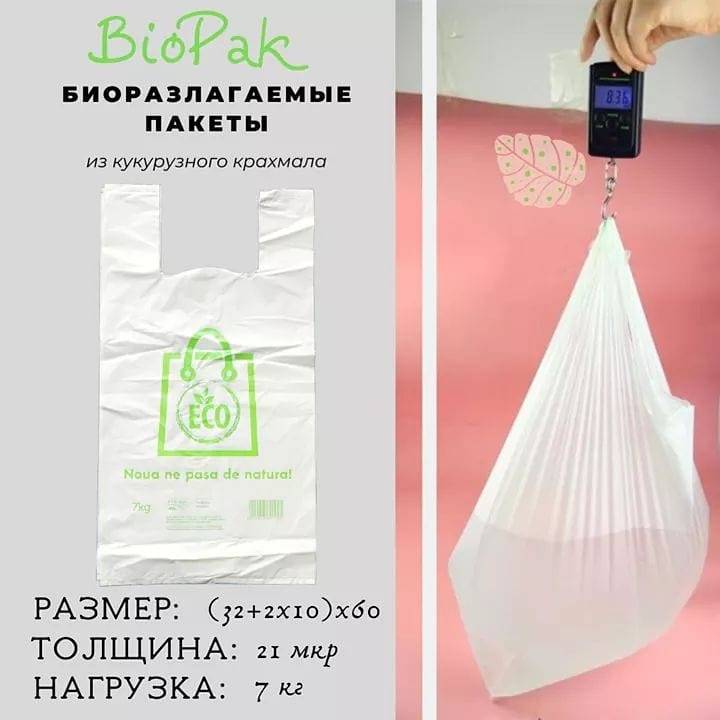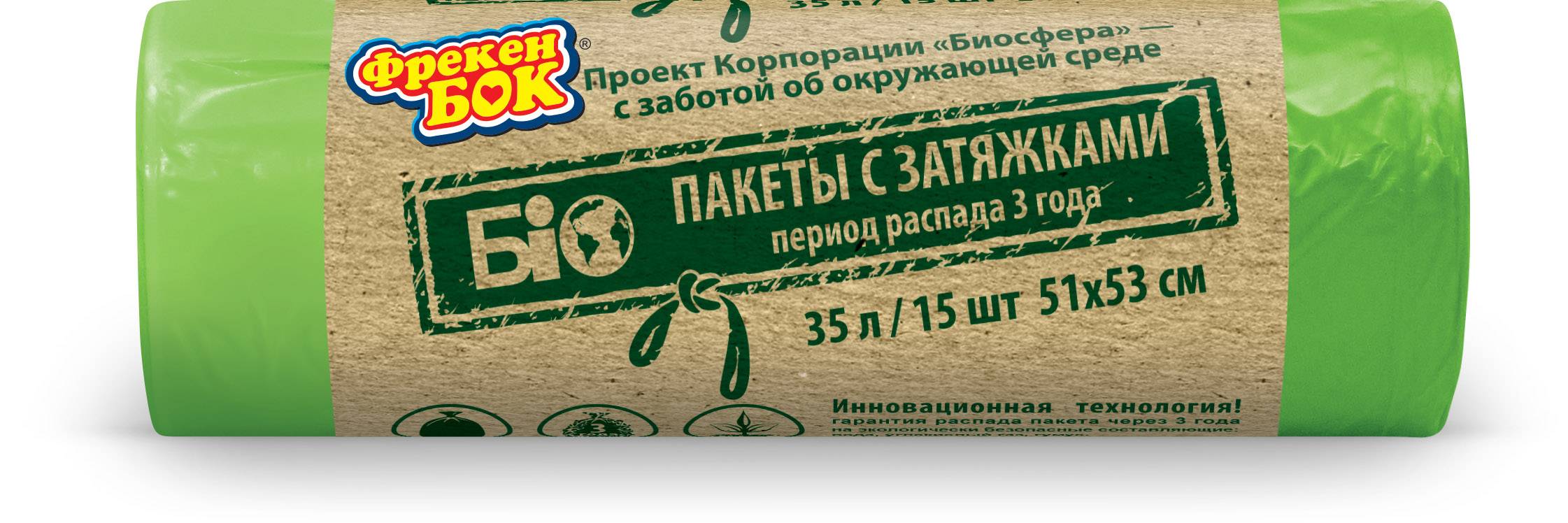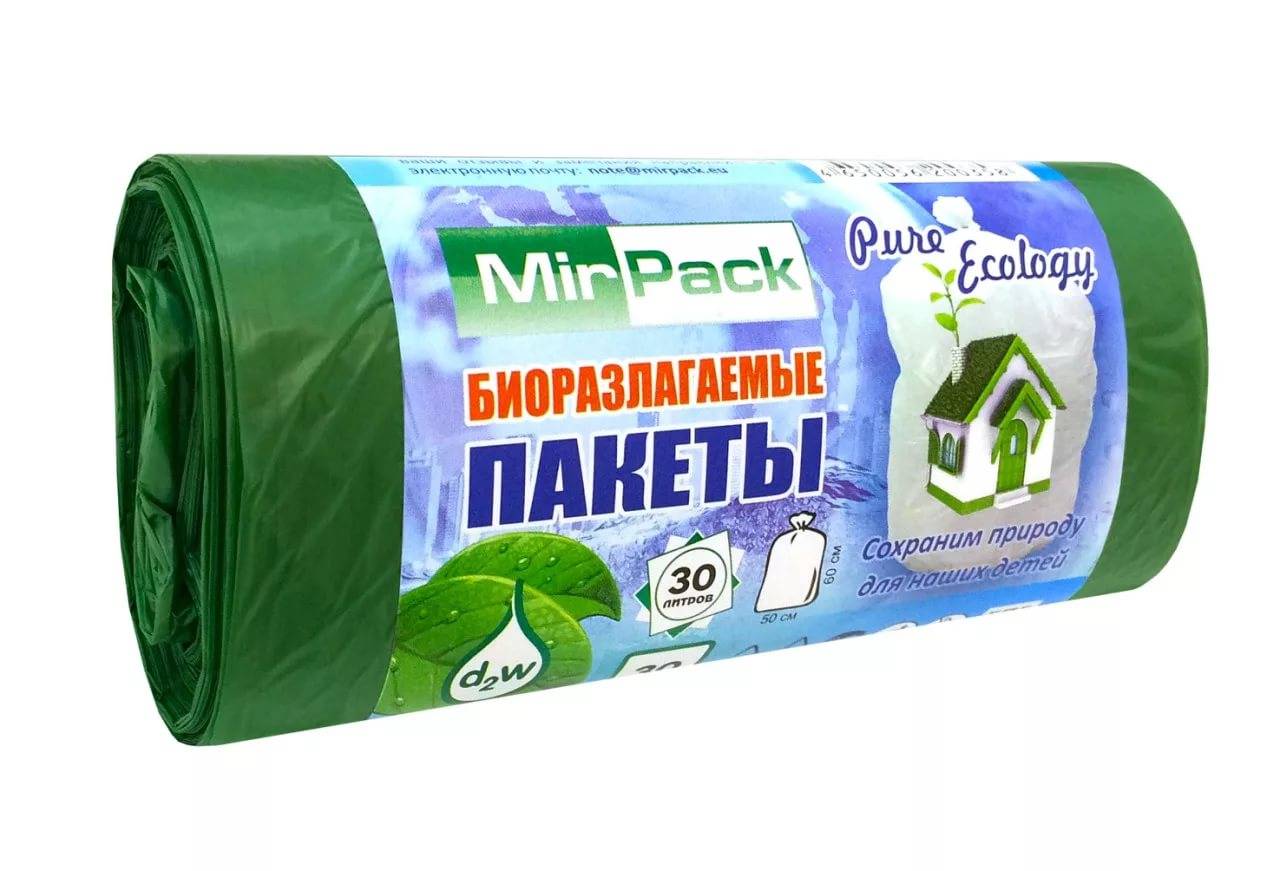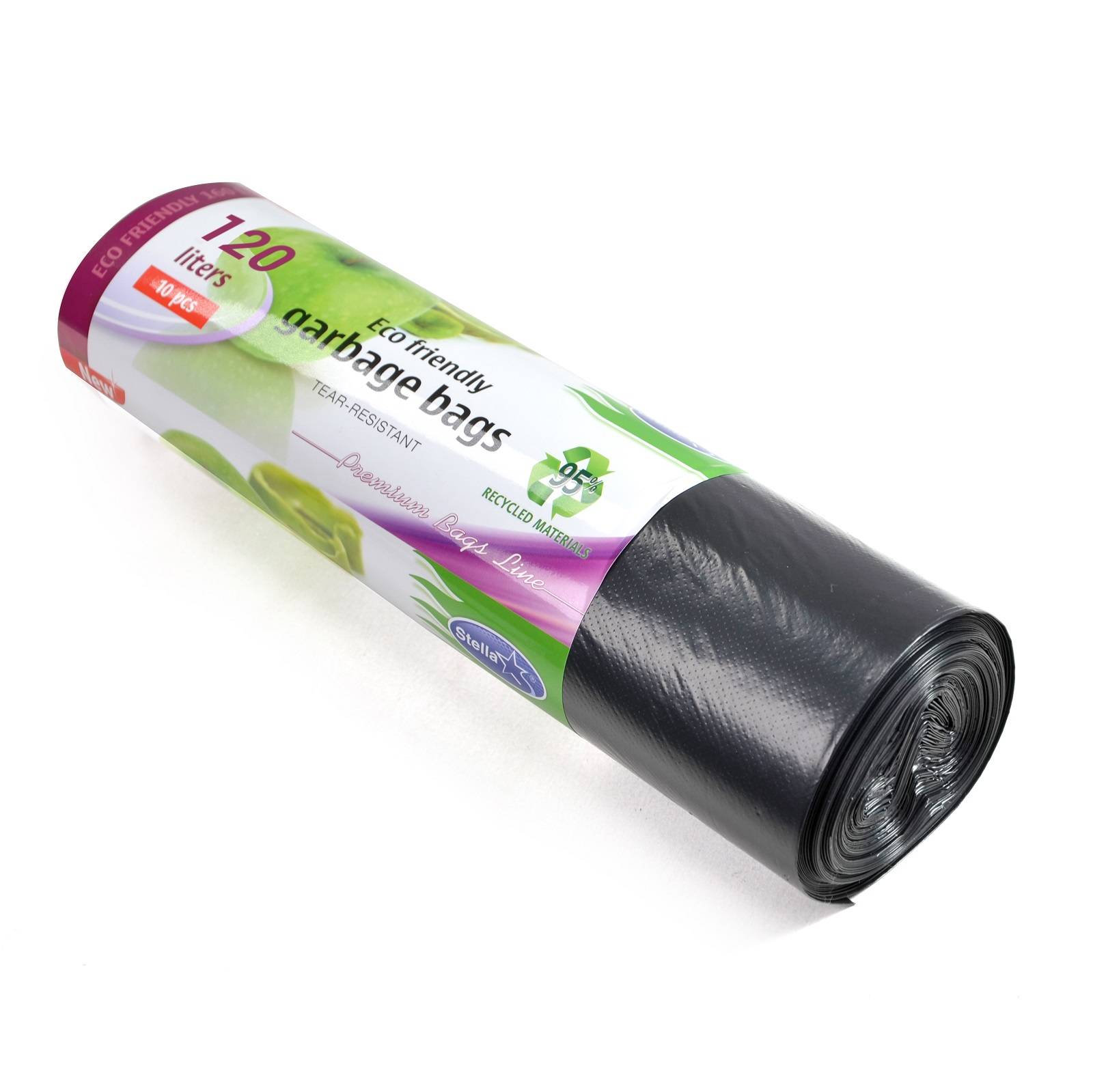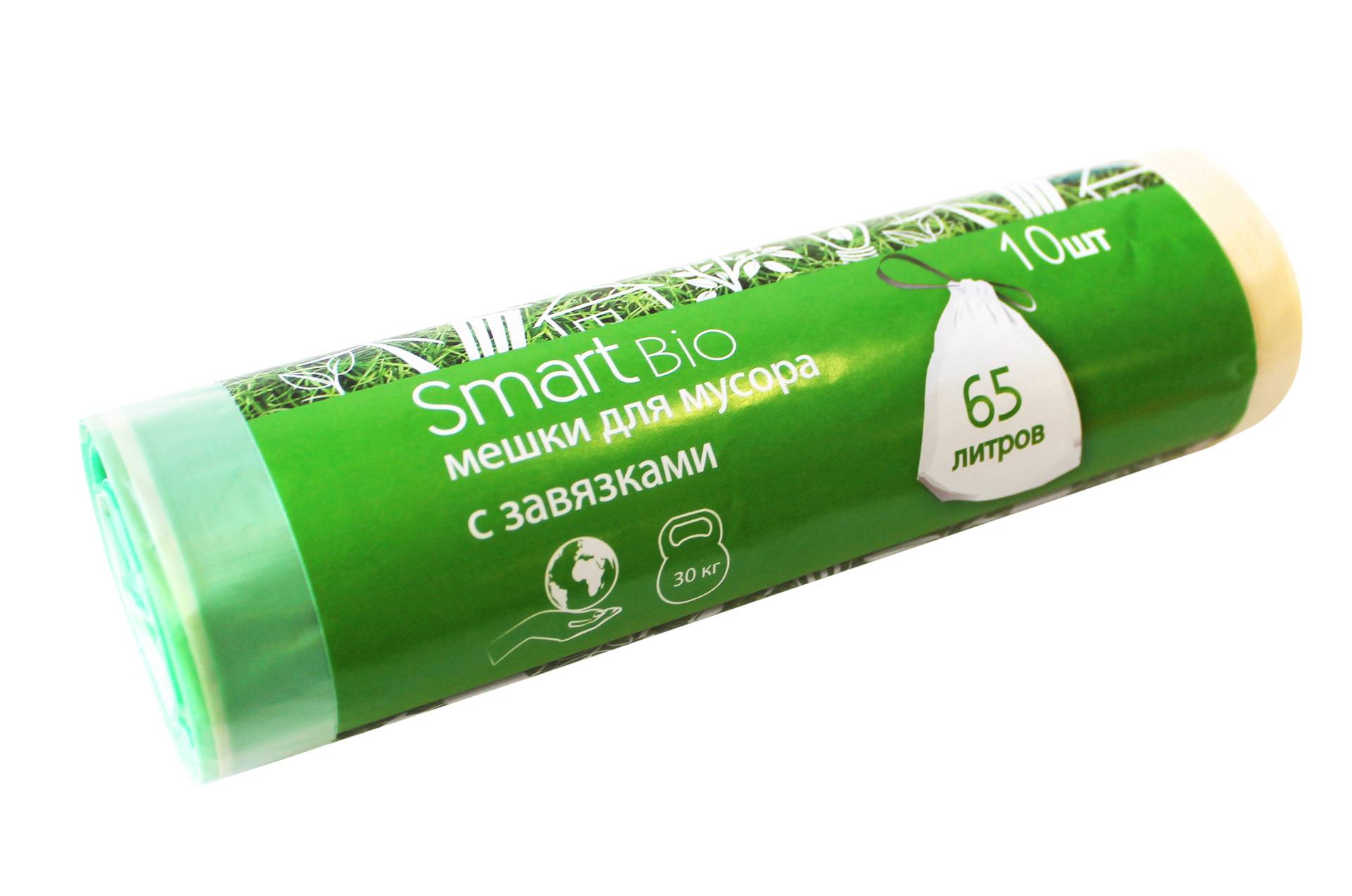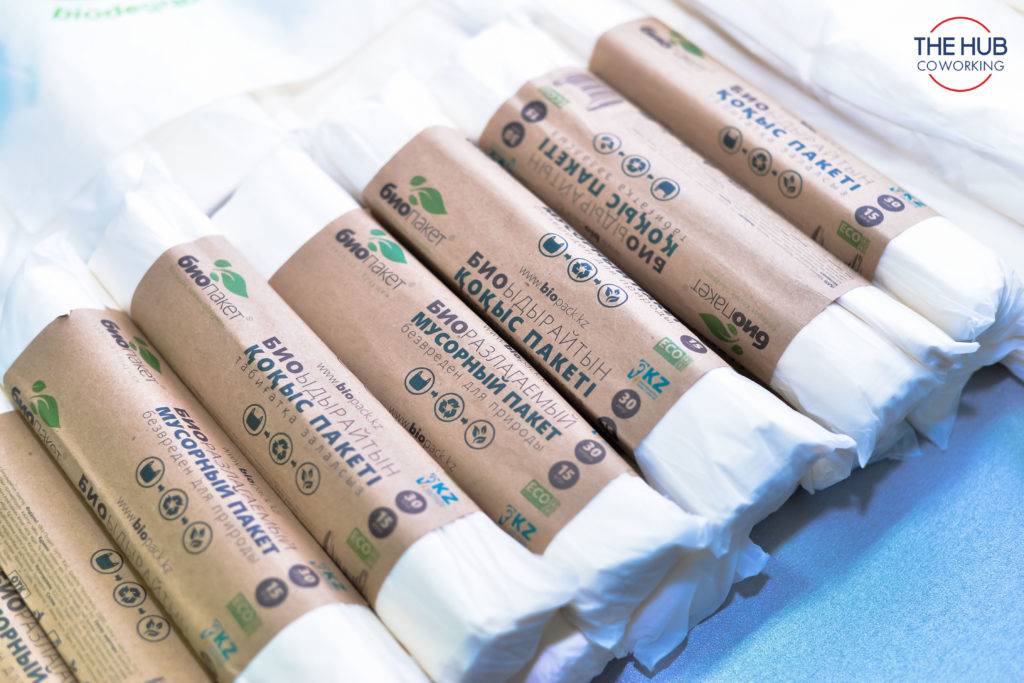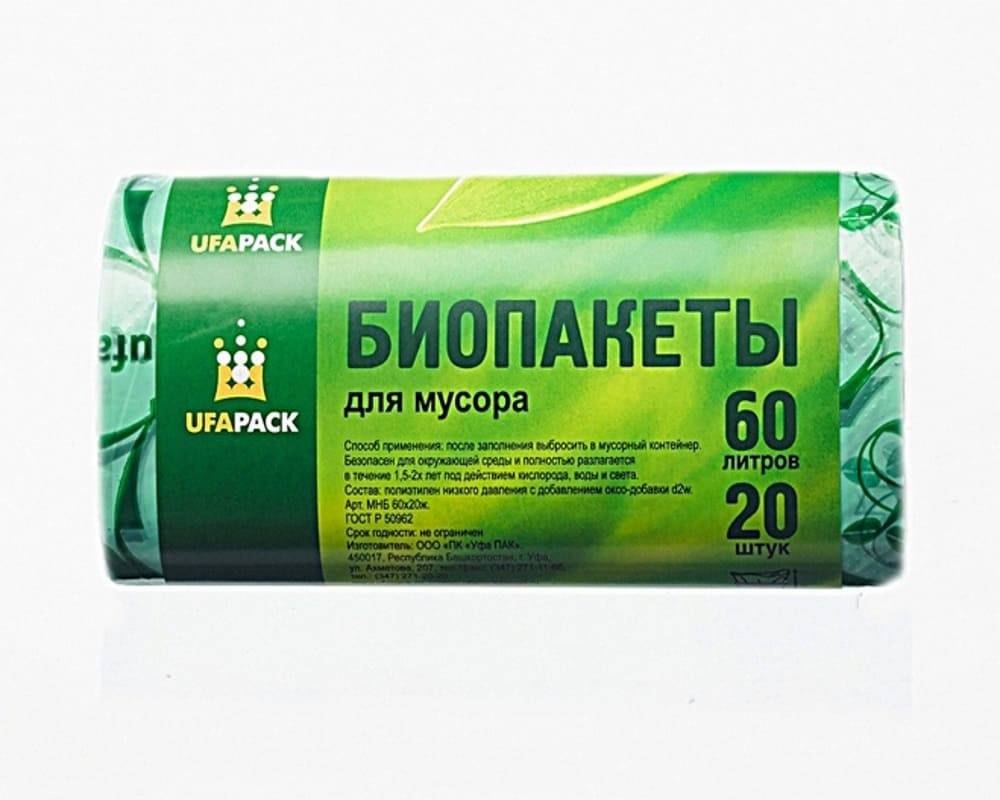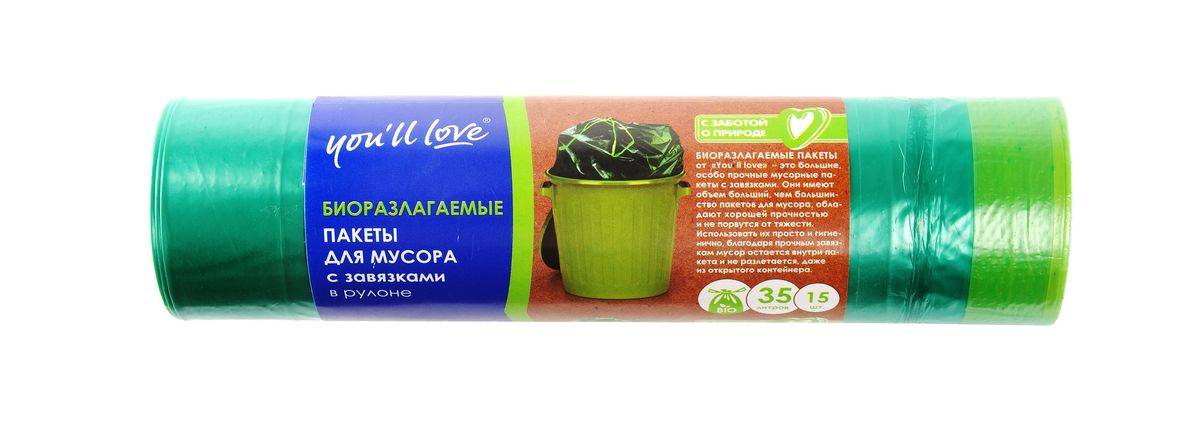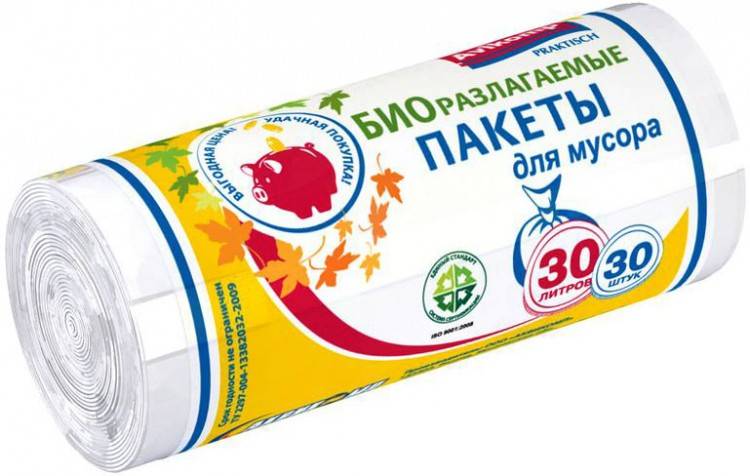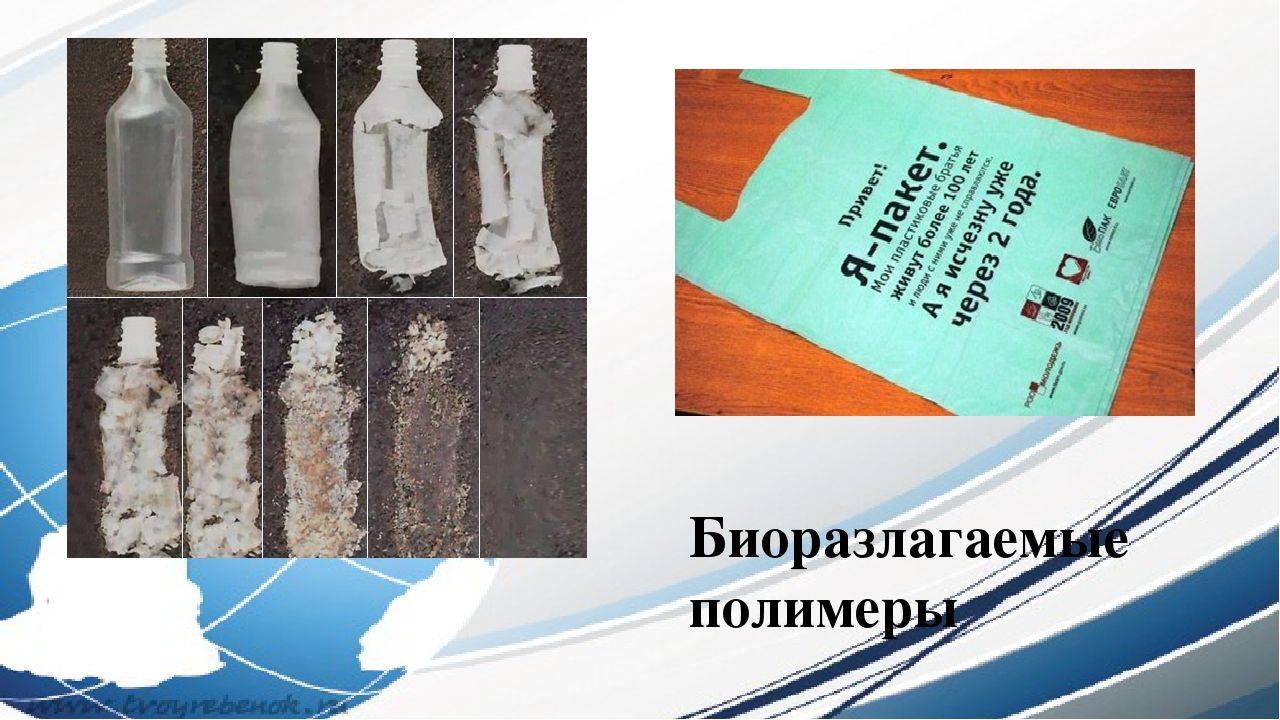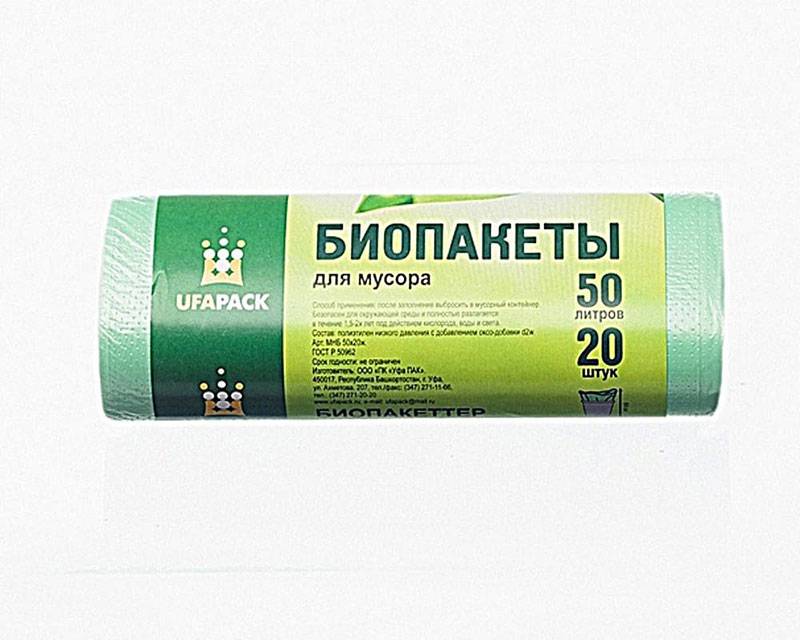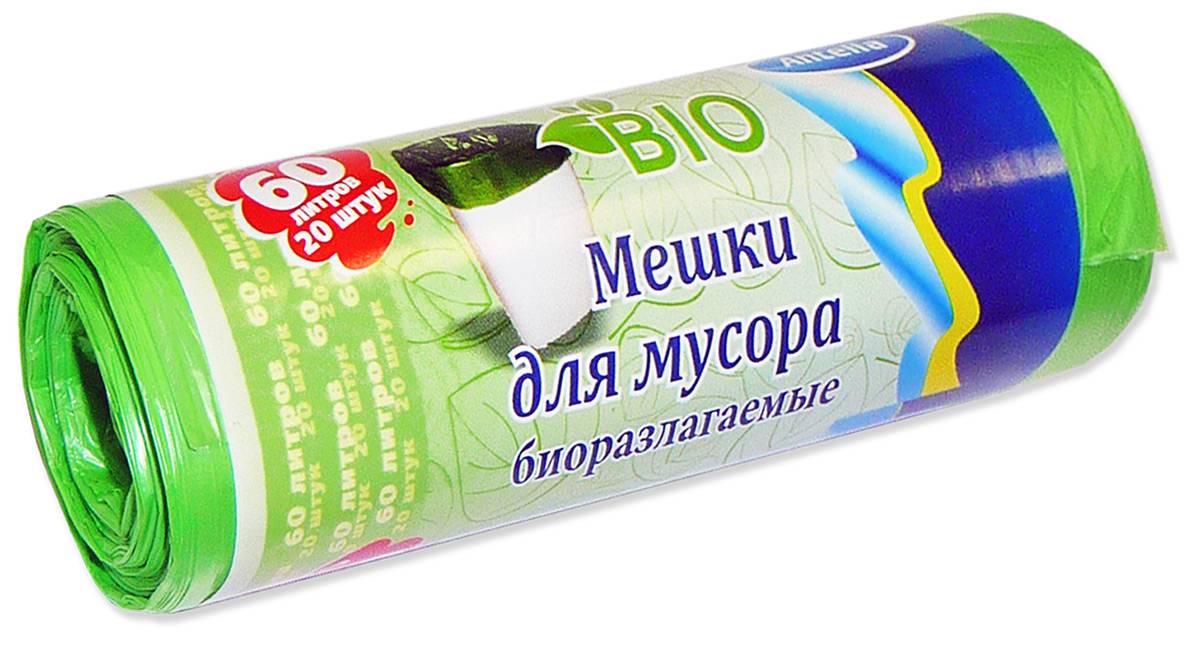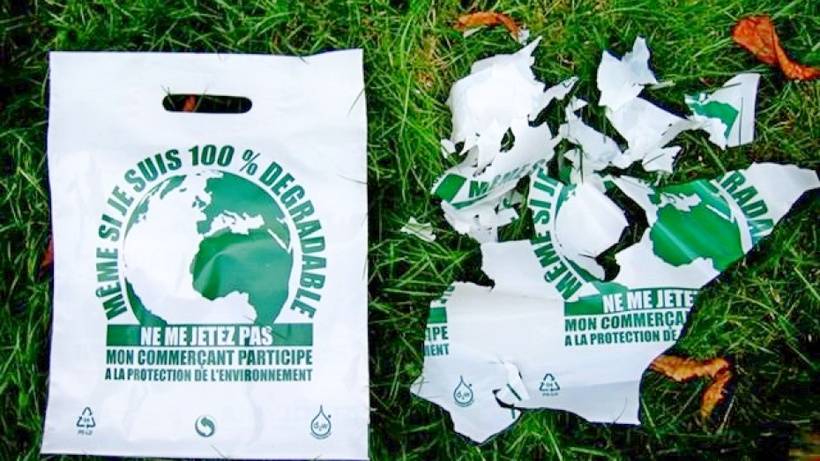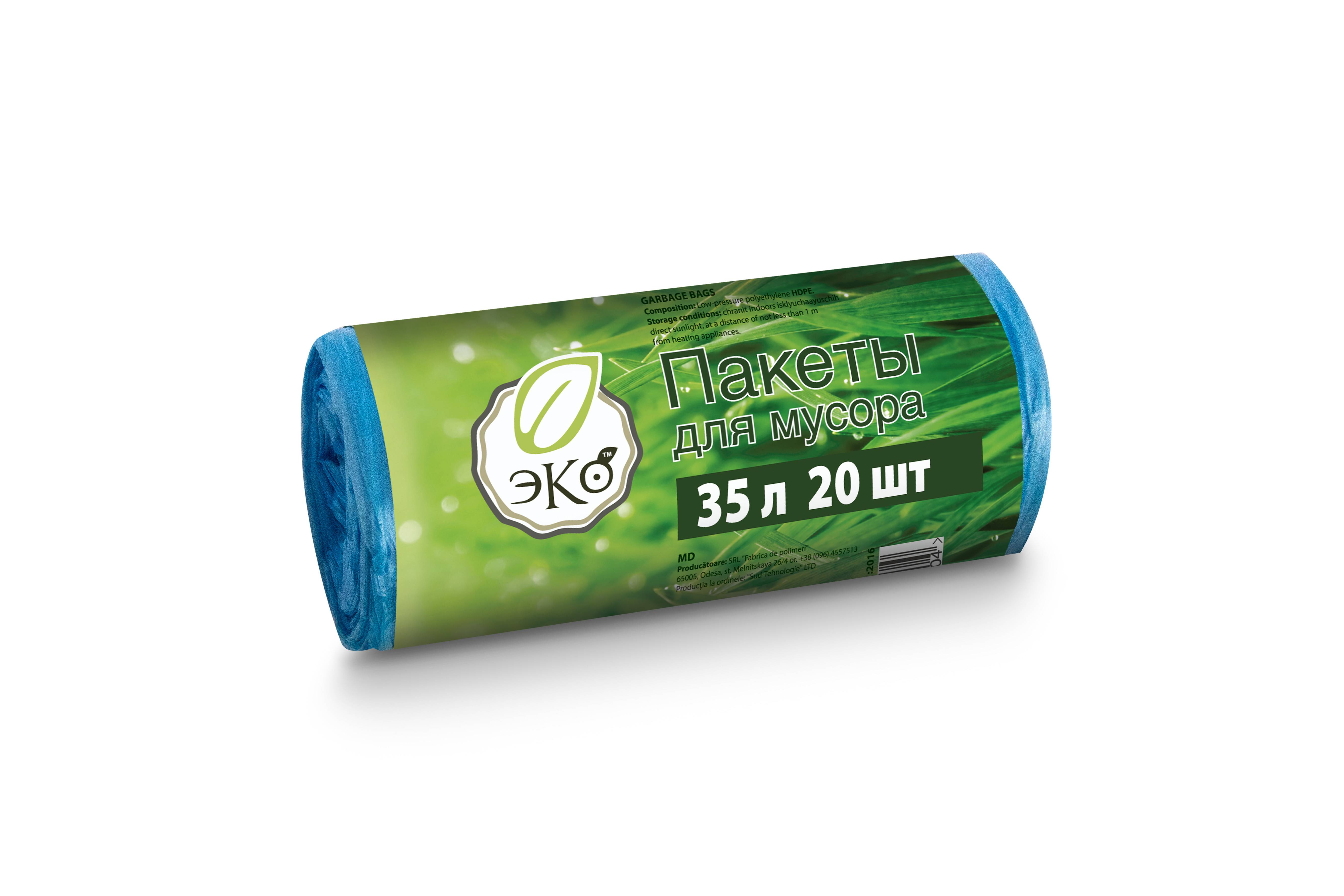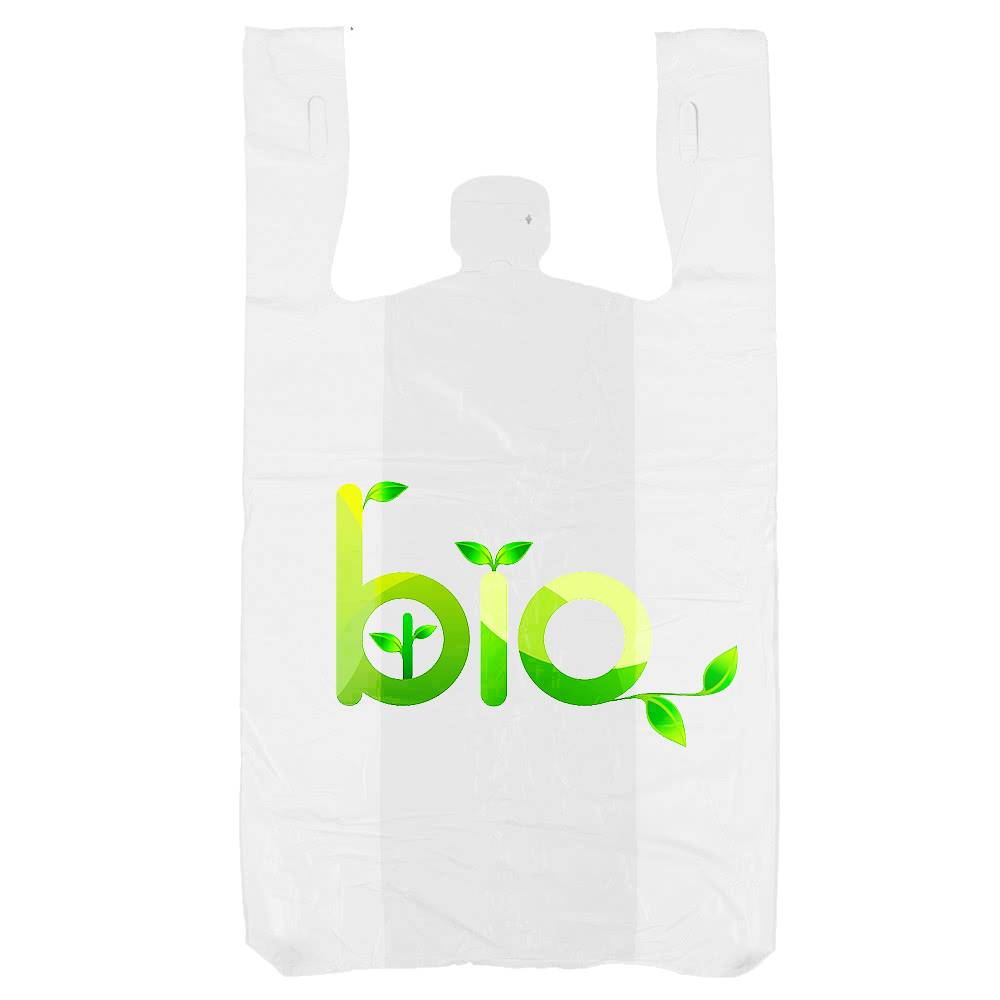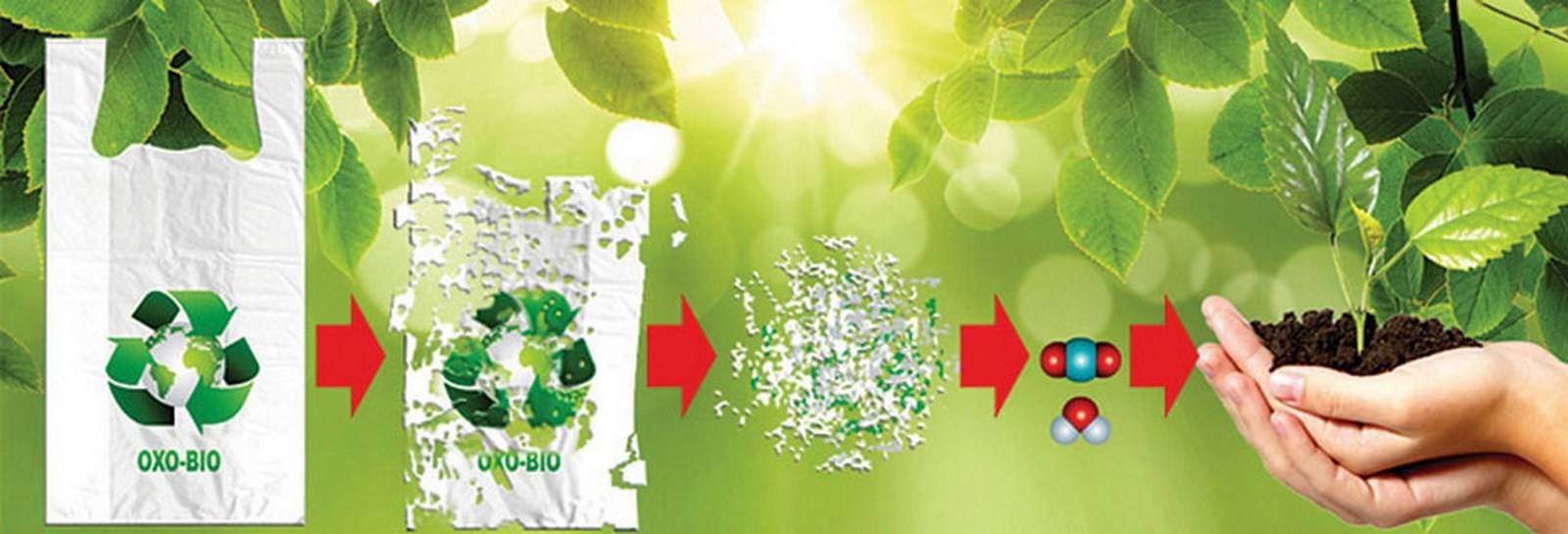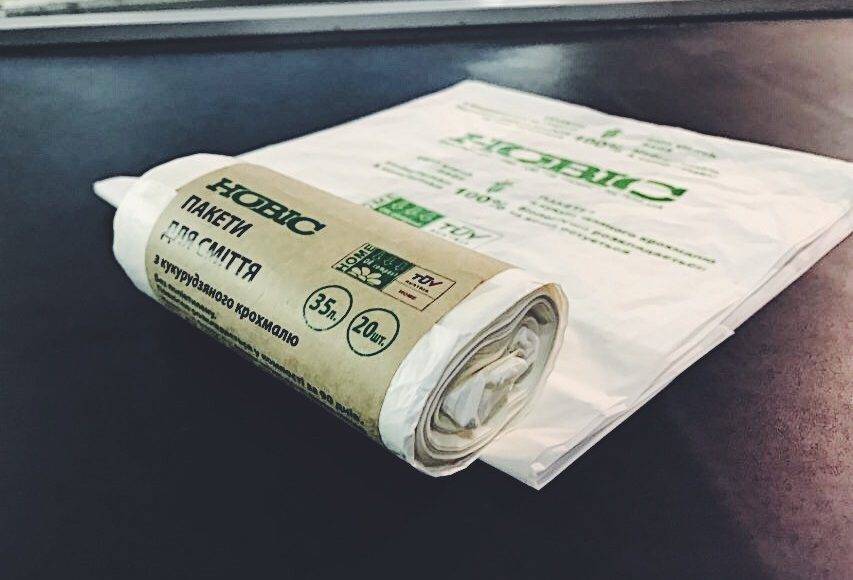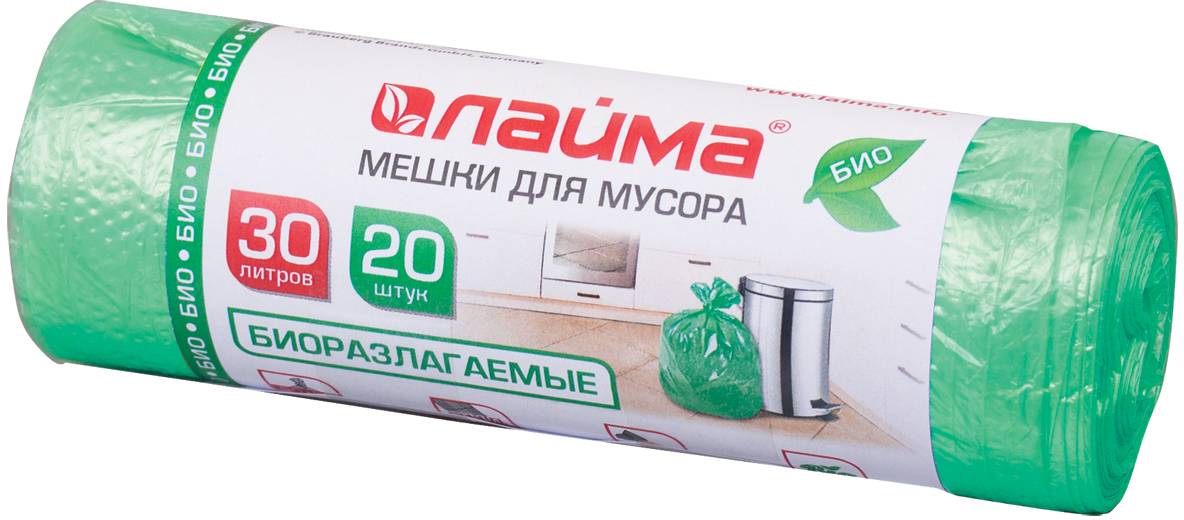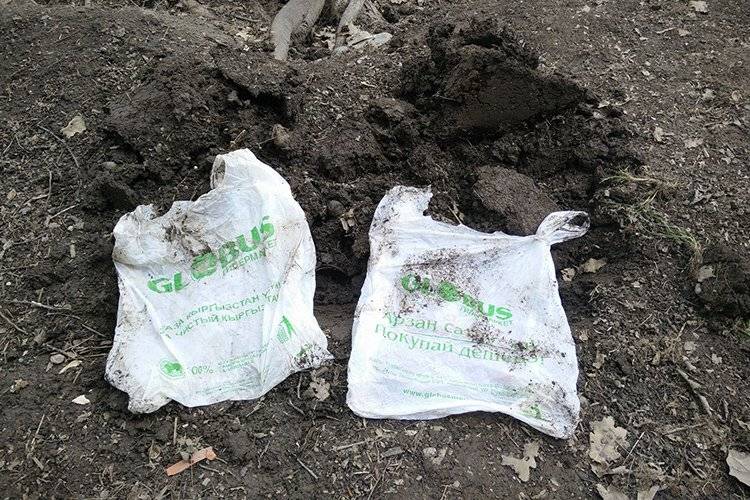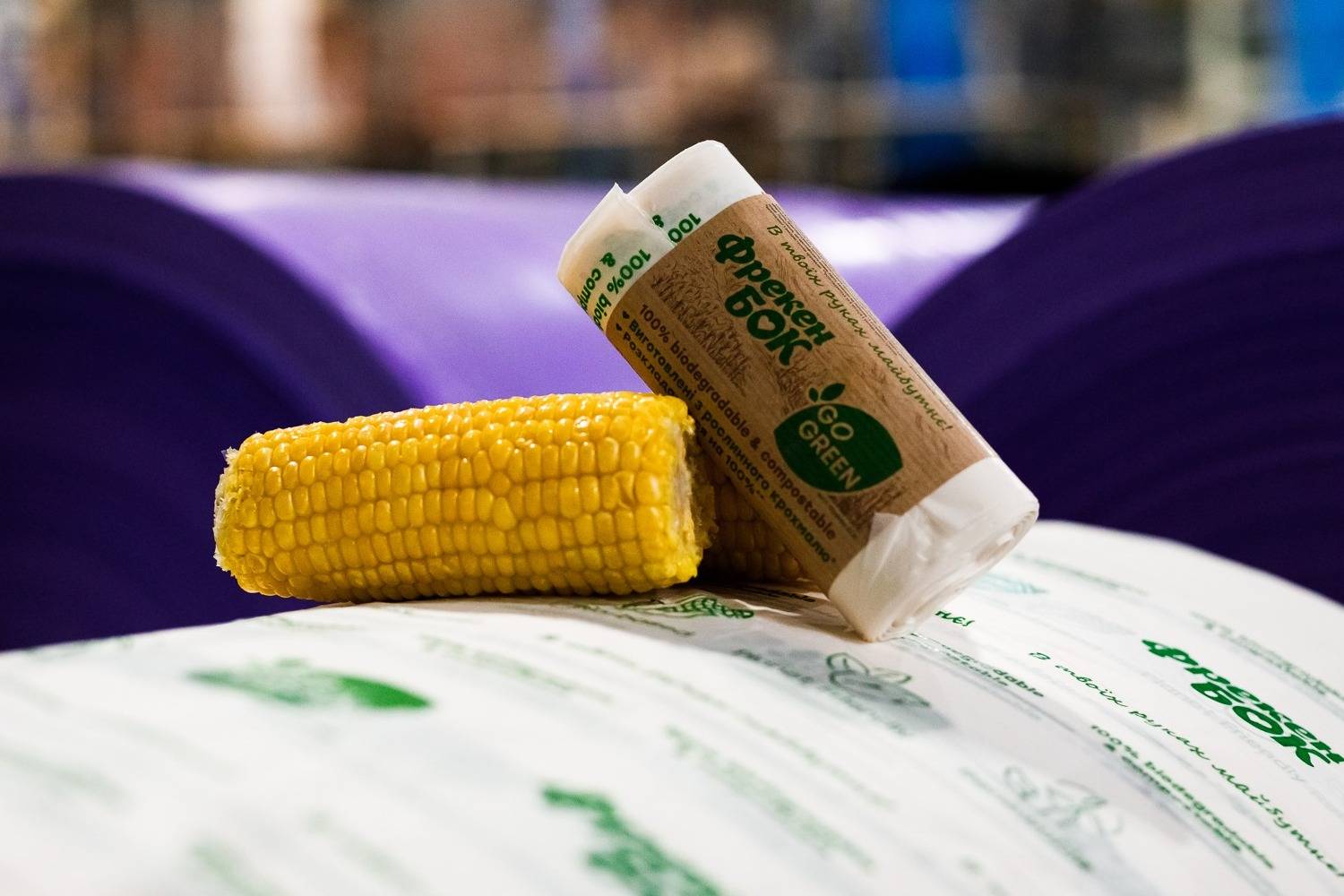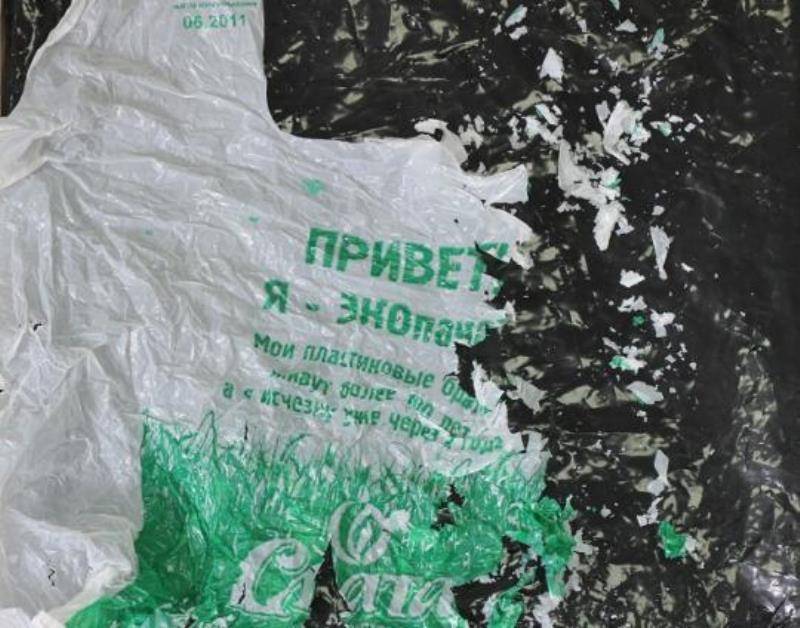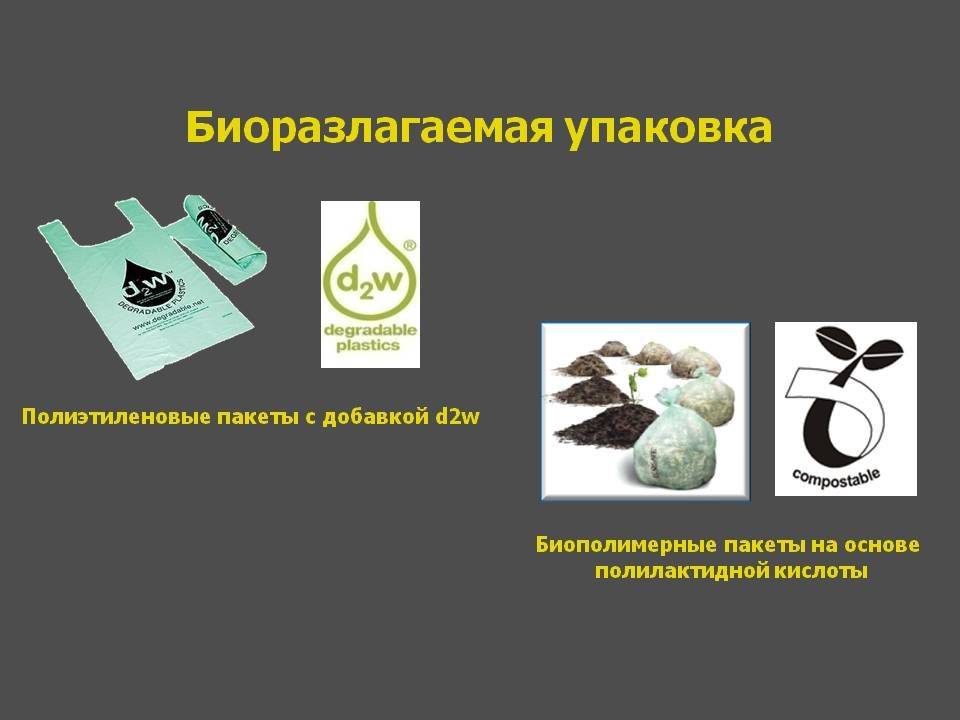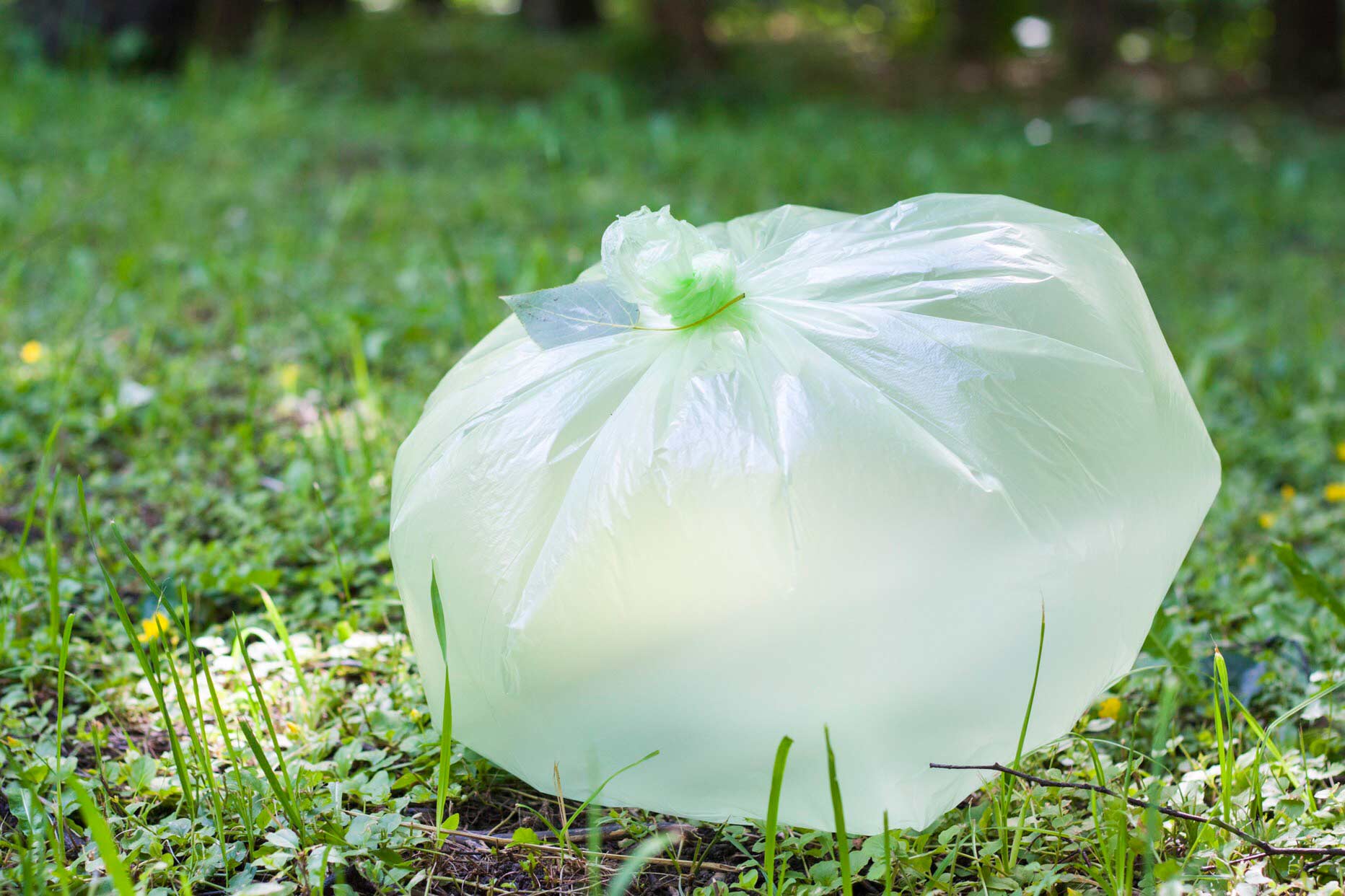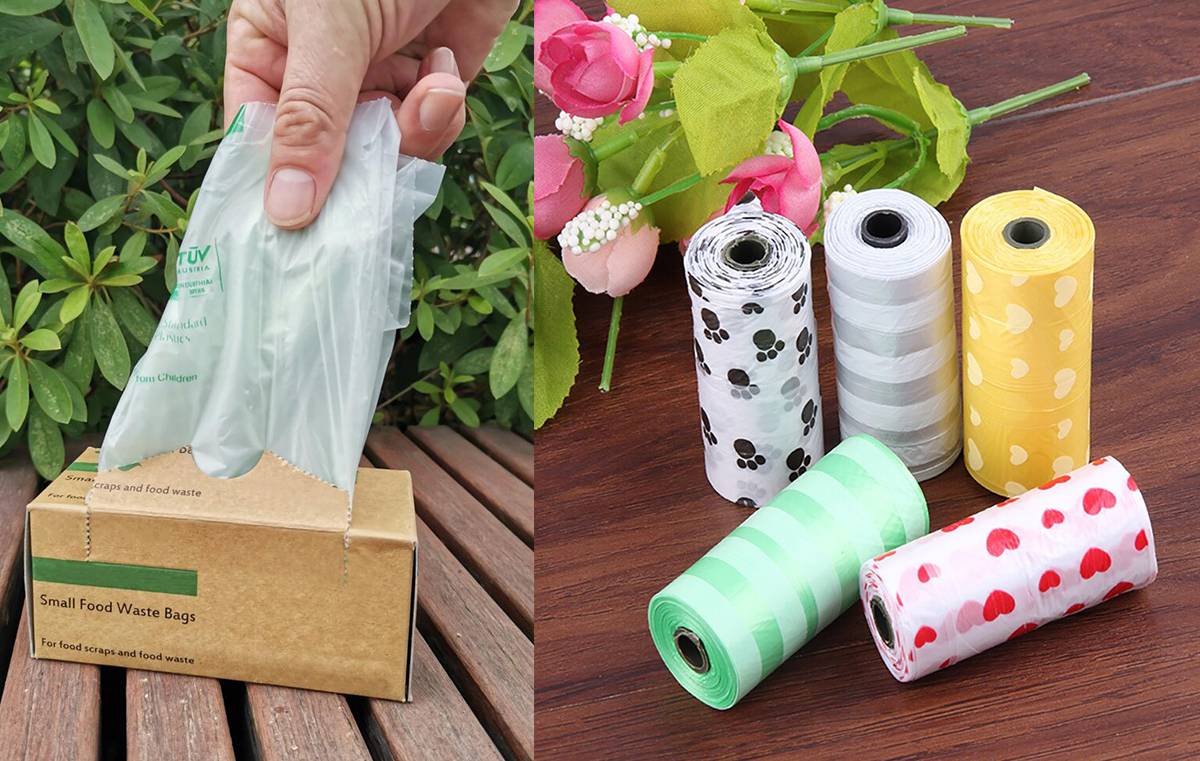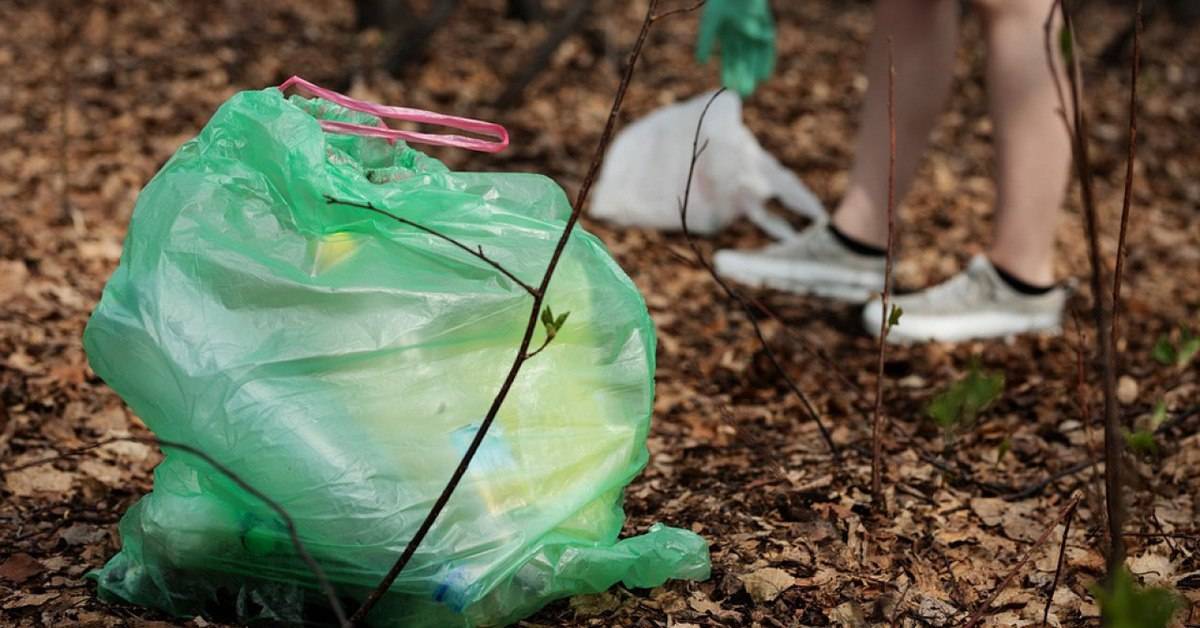Packaging options
Many are convinced that plastic bags are used everywhere just because there are no other options. But this is not true. Today, there are at least three alternatives:
- paper packaging. Moreover, it is not at all necessary to cut thousands of trees for production, recyclable materials are also suitable.
- textile bags or string bags. It looks stylish, is cheap, lasts a long time. And the rule to take an eco-bag everywhere with you is a matter of habit.
- biopackages.
What are biodegradable plastic bags, what are the types
Biopackages - packaging created from components that decompose under the influence of air, water, light, transforming into organic compounds within 1.5-2 years.
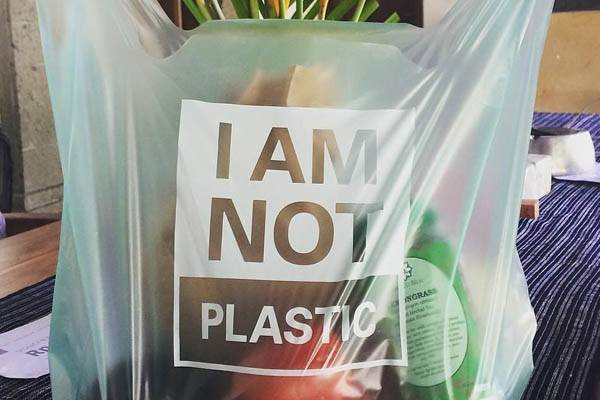
Based on the production technology, bioplastics are divided into 2 types:
1. Synthetic plastic or oxo-biodegradable packaging is a plastic bag familiar to users, the surface of which is coated with a special solution (cobalt, nickel, iron salts), which accelerates the decomposition process. The appearance, as well as the performance, remain unchanged. Lines for the production of plastic bags require little or no major changes, so manufacturers are often willing to agree to produce "bio-bags".
This may become one of the alternative options, but it is difficult to call it environmentally friendly. In the course of its decomposition, this type of plastic goes through two stages: fragmentation (division into smaller parts) and mineralization (breakdown by microorganisms). At the moment when the decay process of plastic (albeit bio) has begun, small particles are formed, and until these particles are broken down by microorganisms, they can freely (when breathing) get into animals and the human body and cause harm to health. Apparently, this type of materials is "new profitable horizons", the popularization of which will bring dubious benefits to the environment.
2. Hydro-biodegradable bags or natural polymers - packaging based on starch. The most common emblem for a truly biodegradable bag is a sprout or leaf.

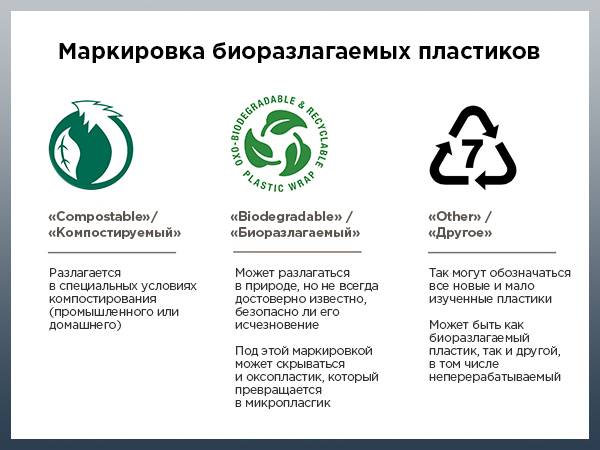
How does the process of decomposition of natural polymers take place?
Biodegradable plastics, including plastic bags, can be recycled with other organics such as food debris. Utilization can take place in two scenarios: aerobic process (under the influence of oxygen, for example, composting), anaerobic process (used to obtain biogas).
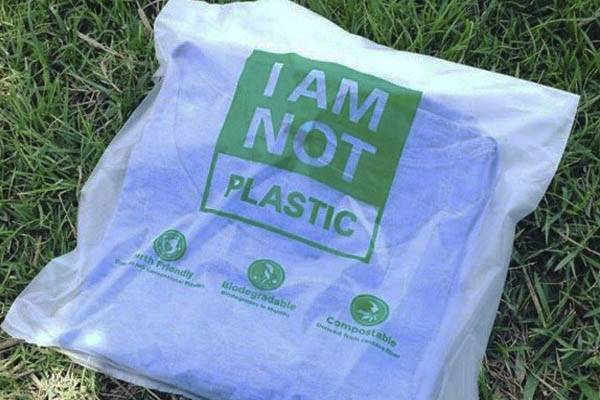
It should also be understood that the use of biodegradable plastic bags implies proper disposal. The option of taking it to a landfill is not suitable: under tons of other garbage, oxygen access to the plastic will not be provided, which means that the decomposition process will be delayed. The best option is industrial composting, where optimal conditions are created (humidity, high temperature), but all this makes the recycling process energy-intensive and labor-intensive. Also, you can not mix bioplastic and ordinary polyethylene, this also slows down the decay process.
Disadvantages of hydro-biodegradable bags
The goal of replacing plastic bags is to rid the planet of plastic, and hydro-biodegradable packaging does this task, but the material has its drawbacks. So, the maximum strength is 1 kg, and special conditions must be observed for their storage: protection from UV rays, moisture. In addition, to produce hydro-biodegradable bags, it is necessary to completely rebuild the production lines.
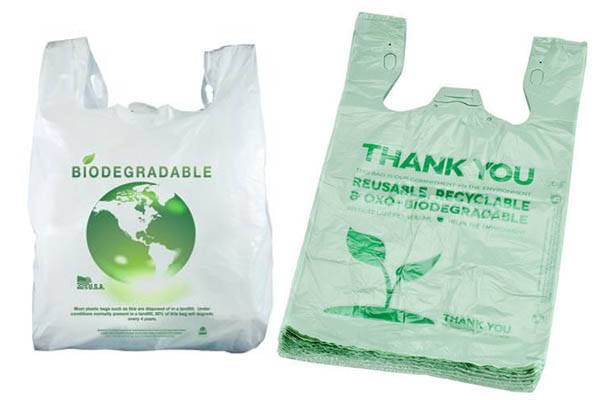
Another drawback may arise in the near future: t.The raw materials for bioplastics are corn, sugarcane or wheat, from which food is made, then during the reduction of arable land and water reserves, the question may arise: what is more expedient to spend raw materials for a bag or food.
Do you think biodegradable plastic bags will become a real alternative to plastic bags?
About biodegradation and types of bioplastics
First, let's understand what biodegradation is. It is a process by which bacteria or other biological processes break down organic material into environmentally friendly substances. Decomposition can occur both without oxygen (anaerobic) or with oxygen (aerobic).
Today there is no clear definition of the term "biodegradable" in relation to goods in general. Therefore, there are testing standards only for their individual components.
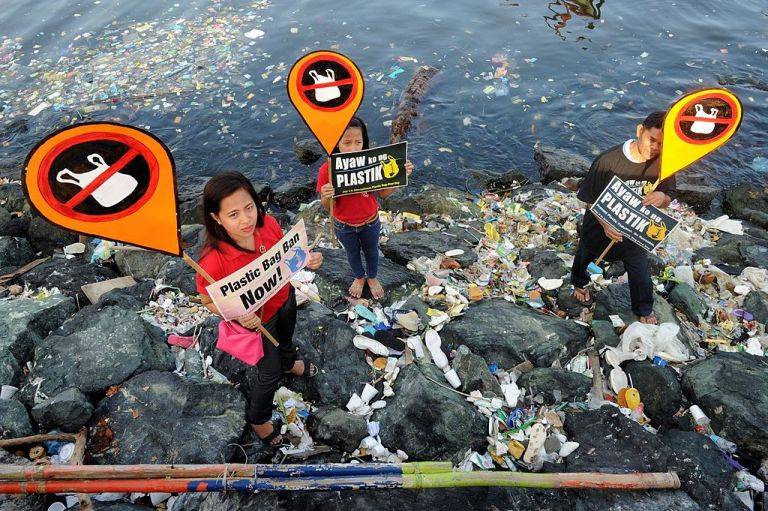 Biodegradable plastic (BP) is a large family of different polymers that are derived from plant materials and decompose to water and carbon dioxide. Wheat, corn, sugarcane, etc. plants can be used as raw materials for BP.
Biodegradable plastic (BP) is a large family of different polymers that are derived from plant materials and decompose to water and carbon dioxide. Wheat, corn, sugarcane, etc. plants can be used as raw materials for BP.
Polymers chemically synthesized from plant-derived monomers, such as polylactide (PLA), also belong to BP.
The BP decomposition process can be different. For example, starch-based plastic degrades naturally. But plastics such as polylactide require increased humidity and temperature, which is achievable under industrial and natural composting conditions.
Oxidisable plastics - polyethylene with additives of transition metal salts (iron, cobalt, nickel) - also belong to BP. Under natural conditions, the decomposition of such plastics occurs in 2 stages. First, under the influence of oxygen and light, the plastic breaks down into small fragments of polyethylene and metal salts. It is impossible to know what happens at the second stage, but, according to the assurances of the manufacturers, under the influence of microorganisms, polyethylene fragments break down.
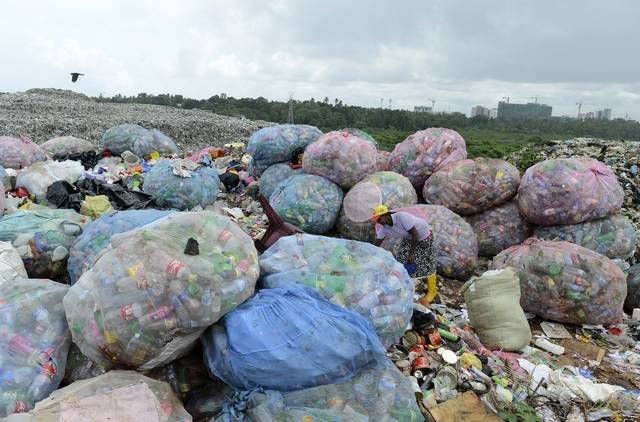 An independent study has shown that in 350 days no more than 15% of polyethylene from oxoplastic degrades in the soil to carbon dioxide. Thus, the plastic bag, which should have completely disappeared in natural conditions, turns into a mass of small plastic granules, polluting the environment with microscopic particles of plastic. Microplastics pollute water and reduce soil fertility.
An independent study has shown that in 350 days no more than 15% of polyethylene from oxoplastic degrades in the soil to carbon dioxide. Thus, the plastic bag, which should have completely disappeared in natural conditions, turns into a mass of small plastic granules, polluting the environment with microscopic particles of plastic. Microplastics pollute water and reduce soil fertility.
It is safe to say that oxo-degradable bags do not completely decompose.
Other alternatives to packages

The most correct decision in the matter of caring for the ecosystem and packaging for food would be to use eco-bags and good old grandmother's handbags. Below we will tell you more about them:
- Eco-bags - usually made from natural fabrics - cotton, linen, etc. They are very strong, durable, washable and, in addition to the function of carrying products, they can also perform an aesthetic one. These bags are produced with various patterns and prints, so going to the store with them is not only good for the environment, but also beautiful.
- Avoskas have been familiar to people for a very long time, at least to those who were born and lived in the USSR. Such nets for food were in the house, if not every first, then every second for sure. They are durable and take up little space in a handbag, so you can carry such handbags with you anytime, anywhere. Currently, you can buy string bags of different colors and types of weaving, made of cotton or nylon, with small or long handles, in general, the choice is great and everyone will find a string bag to their taste and color. In addition, there is a project in Russia called Avoska Gives Hope. Its essence is that these bags are made by people who have lost their sight. By purchasing such a product, you will help people find a business that will bring them income.
- And you can also sew bags with your own hands, or buy such copyrighted things from craftsmen. When creating such an ecotara, you can use old jeans, curtains, fabric from old umbrellas, and almost any unnecessary things from the wardrobe. There are many workshops on the Internet that show you step by step how to create them. Using this handbag, you can save the environment, and again give a second life to old clothes that you have not worn for a long time, but it is a pity to throw it away. There is a double benefit.
What are biodegradable garbage bags made of?
Special substances are added to the packages that help accelerate the biodegradation process. There are two types of polymers on the world market with a high degree of biodegradability. Eco-products are made from them.
Oxo-degradable
The composition of the materials includes a special substance - d2w, which promotes the rapid decomposition of plastic under the influence of oxygen and ultraviolet radiation. The polymer decomposes in two stages: oxidation - the material breaks down into particles, biodegradation - the degradation of the disintegrated fragments.
From corn starch and other natural materials
Polymers are made from potato, corn starch, wheat, soy, cane sugar. Such packages usually have a special icon in the form of a sprout or leaf. Products do not pose a danger to others and nature, as they are completely decomposed.
A feature of production is the irrationality of resource use: food products are grown for the manufacture of packaging. Degradable bags require special conditions of use: they are stored away from the sun and moisture, not loaded.
Biodegradability concept
The problem of ecology and safety is very urgent today. About three hundred million tons of polyethylene bags are formed annually in the world. This has a detrimental effect on the bowels of the Earth and the future generation. Therefore, the main task of ecologists is to minimize the harm to the results of human life. They began to study the ability of materials to decompose into safe substances under the influence of natural factors - biodegradability.
> Decomposition of material from exposure to water, sunlight, air produces CO2, water and mineral salts. These components are less hazardous to the environment. Biodegradability is relevant in industrial production and household chemicals.
Biodegradable materials are highly degradable. There are two types: polymers and those that are of natural origin. The creation of biopolymers partially solves the waste problem. This is due to the lack of economic benefits, conditions for mass production. There are two concepts of biodegradability: partial and complete.
Partial
It includes biomaterials that partially lose their properties after structural changes due to the influence of external factors. That is, completely the components that make up the composition are not capable of decomposition. This is the stage in the process leading to the hydrolysis of the hydrophilic portion of the molecule. It manifests itself in a decrease or decrease in foaming. The low percentage of decomposition of molecules is due to the high content of bioactive substances, impurities of by-products.
Full
Biodegradability consists in the complete destruction of polymer molecules to the state of water and carbon monoxide. This is the final stage in the process of assimilation of organic matter by microorganisms.

Cons of bioplastics
1. The choice of raw materials for the production of bioplastics. The main raw materials for fully degradable BP are crops that are also used as food: wheat, corn, sugarcane. It turns out that the production of plastic competes for raw materials with the production of food. A decrease in arable land, a decrease in water resources, high energy costs - all this calls into question the feasibility of further production of BP.
2. Conditions for complete decomposition of BP.When buying goods made from "degradable" plastics, you need to take into account their future fate. Alas, our landfills do not have those required conditions that are needed for BP decomposition - composting conditions. This can only be organized on your site.
3. "Pseudo-degradable" bioplastics. Oxoplastics, sold under the guise of BP, cause no less damage to the environment than ordinary plastic. Due to additives that reduce the mechanical strength of polyethylene, oxoplastics cannot be recycled. The only way to "dispose" of these plastics is to landfill with other non-recyclable waste.
 Alas, paper packaging is also not a way out of this situation: it is fragile, and its production uses primary wood, which is irrational to use for this purpose. Papermaking requires a lot of electricity and water, and the output produces a large amount of toxic waste water.
Alas, paper packaging is also not a way out of this situation: it is fragile, and its production uses primary wood, which is irrational to use for this purpose. Papermaking requires a lot of electricity and water, and the output produces a large amount of toxic waste water.
The only advantage of paper packaging is its ability to naturally rot and be recycled. But this only applies to paper bags without inserts of other materials (plastic or metal elements), corrugated or laminated.
Thus, the sustainability of biodegradable bags is rather a myth created by the manufacturers themselves.
If you're looking for an eco-friendly alternative to plastic or plastic bags, go for an eco-friendly cloth bag. A reusable rag bag will last you a long time, and once it ends up in a landfill it won't harm the environment as much as a plastic bag.
Based on materials.
Also find out how to organize waste sorting at home.
How buyers react
Nowadays, Azbuka Vkusa sells bags made of denser plastic. They cost five rubles and they say they can be used multiple times. In fact, this is one of the options for reusable packaging. They can even be washed and with careful use they will serve the consumer about 50 more times, promises the press secretary of the retailer Andrei Golubkov.
“If a person uses reusable packaging, which we are calling for right now, we get about minus ten bags a year per person, which, in principle, is not bad for the scale of Russian environmental problems,” he says.
After the packages became paid, they are taken 2.5-3 times less often.
The company understands that there is a certain consumer pattern in Russia - customers are used to using plastic bags, not canvas bags - and it cannot be changed right away. But if the same plastic is not put in a garbage bag, but properly stored and then sent for recycling, this is the best way out of the situation.
For Azbuka Vkusa, the new campaign is a good first step, says Maria Gelman. A complete rejection of packaging is too complicated a process (The Village has already written about how the first store in Moscow works without packaging). But if, for example, cling film can at least extend the life of products, the packages have no useful functions at all, so abandoning them is great
But it's important to understand what alternatives are offered in stores: it's good if it's a canvas bag, not a paper bag.
Biodegradable bags: research
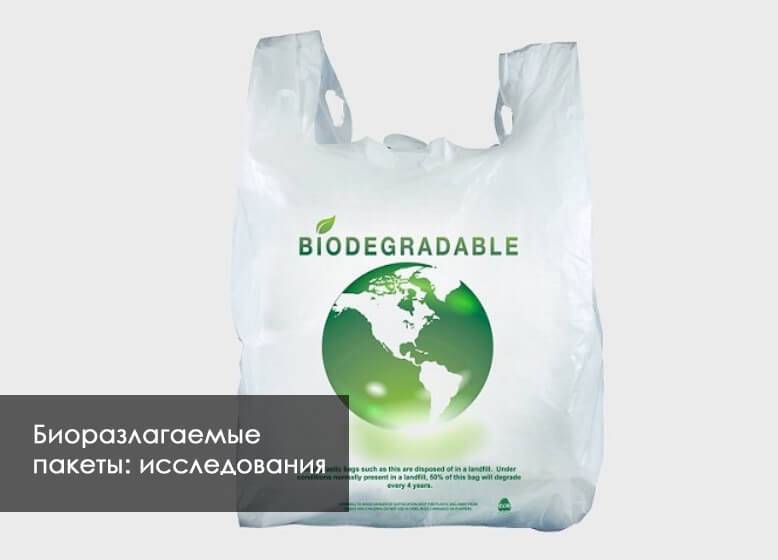
In 2019, the American scientific journal dealing with science and technology in the field of environmental protection published the results of a study of biodegradable bags and conventional plastic bags that are familiar to us. The experiment consisted in the following: for three years, compostable, bio- and oxo-degradable and ordinary polyethylene bags were kept in the ground and sea water. The results showed that:
- bio- and oxo-degradable bags have hardly changed their appearance! They could even carry a load! That is, contrary to the promises of the manufacturers, they do not decompose at all in a couple of years.
- ordinary plastic bags, of course, have not changed at all and have retained all their properties. Take it and go to the store to shop.
- the compostable bags have reached some form of decomposition and have torn when trying to load them. The bags that were in the sea water have completely dissolved. But it should be said that no additional research has been carried out on what constituents these packets have decayed into. That is, it is not known whether microplastics remained after these bags.
In general, the prefix “bio” to the name of these packages was unreasonably attached. In addition, in January 2018 in Brussels, the European Commission presented a report on the environmental consequences of the use of oxo-degradable plastics. The main conclusion of this report was the idea that there is as yet no evidence of complete and safe degradation of biodegradable plastic in nature. That is, the safety of microplastics, into which the bio-package disintegrates, is in great doubt. Back in 2015, a Milan court ruled that plastic packaging containing the d2w additive cannot be called biodegradable. Since it does not meet European standards.
According to GOST for industrial composting (i.e. disposal) of waste, oxo-degradable packaging cannot be recycled (again, due to the d2w additive). And it requires sending to a landfill specially adapted for such waste for further burial. In Russia, however, there is not a single such landfill yet. That is, our country cannot dispose of these packages at all! Since there is nowhere to bury them, it turns out that decomposing in the natural environment, these bags fill the soil and water bodies with harmful and dangerous microplastics. In general, there is no benefit from them, environmental friendliness, too, but people have fooled their heads with incorrect information. The European Union has decided to stop using such packages altogether.
Alternatives to biodegradable bags
Most countries have abandoned the usual packaging in favor of environmentally friendly products. Everyone who cares about the environment and their own health makes a choice in favor of one of the presented package options.

Paper
Paper decomposes quickly, it is absolutely safe for nature and human health. Products made from it are distinguished by their strength, wear resistance. But making paper products requires a huge amount of resources: water and wood. The industries that produce paper packaging pollute the air and water. Greater recognition has been gained for packaging made from recycled materials, which preserves the integrity of the forest and the purity of water.
Eco bags
Products are made from durable materials: cotton, bamboo, linen and other fabrics. They have the property of complete biodegradation. Eco-bags are versatile products that are used for shopping, walking to the beach or having a picnic. They are decorated with various drawings and inscriptions. Manufacturers make containers in a variety of styles. Practical items can be machine washed.
Shopping bags
They represent a bag in the form of a nylon, cotton mesh. It performs the functions of a full-fledged bag, when folded it practically does not take up space. Eco-friendly containers can be purchased in various sizes and colors. It can be worn on the arm or shoulder.
Homemade bags
Women of fashion who do not imagine themselves to be the mistress of a string bag can make a bag with their own hands. Author's items have always been popular and remain in trend. The bag can be created from any material, to match any outfit. Creative people not only create designer items, but also help preserve the surrounding nature.
2> Paper bags instead of biodegradable bags
If you care about the purity of nature, about your health and those around you. If you do not care how people will live after you, then neither plastic nor oxo-degradable bags are your comrades. Let's talk about an eco-friendly alternative to all this non-decomposable chemistry.
Paper bags are environmentally friendly, biodegradable, strong enough and tough enough to be reused. BUT, during their production, a huge amount of water leaves, which, ultimately, returns back to polluted water bodies. It takes a lot of wood to create these bags, and trees grow slower than they are cut down. Most importantly, the factories that manufacture these products pollute the air and water. Which, of course, hurts the ecosystem. Therefore, paper bags can hardly be called a good alternative to plastic ones. A more environmentally friendly option is bags made of recycled paper, recyclable materials. Waste paper bags, and any other paper products, can be sent for recycling and give them a second and subsequent life. So you will save the forests and keep the water clean.
Why "Azbuka Vkusa" returned to plastic
In 2012, all Azbuka Vkusa supermarkets launched the “The World We Like” campaign aimed at combating environmental pollution and promoting the ideas of responsible consumption. In the course of it, the company began distributing free biodegradable bags at the checkout and offering customers paper packaging as an alternative to plastic. However, six years later, biodegradable bags were abandoned.
Andrei Golubkov, head of the Azbuka Vkusa press service, said that the company did it on the advice of Greenpeace's ecologists. Experts explained the idea by the fact that in Russia there are no conditions for the correct disposal of biodegradable packaging - a system for separate collection, composting and recycling of waste. For this reason, their use can only harm the environment.
What type of packaging is the most environmentally friendly
One of the problems with paper bags is that they are inconvenient to use in bad weather. In addition, paper is not entirely environmentally friendly packaging, since it is still disposable, Gelman explains. A paper bag decomposes better when composting, but it clears forests and uses a lot more water than plastic bags.
The production of any packaging consumes raw materials, water and energy and pollutes the environment. If we compare a plastic bag and a canvas bag, it turns out that the harm from the production of one bag will be ten times less, says Gelman. Nevertheless, millions of bags are thrown away a day, and bags are never sent to landfill after the first use.
It is a canvas bag that can be called the best option for reusable packaging. But from the point of view of reasonable consumption, it is better not to run after her to the store, but to look at home for some bags that can be used many times, as well as old bags and backpacks suitable for grocery shopping. According to Gelman, it is worth prolonging the life of things, using them to the maximum and only then, if there are no alternatives left, come to buy a canvas bag.
Why look for an alternative to plastic bags?
“All the best things in life are either illegal, or immoral, or lead to obesity” - you just want to add “either convenient”, and you have to give up. For many years, people have actively used plastic bags to store and transport goods and products. The popularity of this packaging is so high that 160,000 plastic bags are used every second in the world.
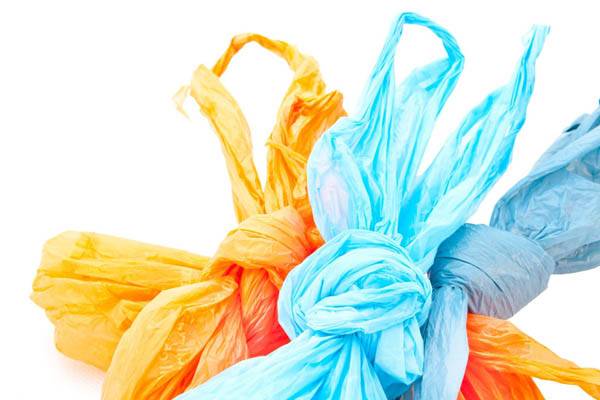
The service life of this packaging is extremely short: you brought groceries from the store, groceries - on the shelf, the bag - in the trash can. Under natural conditions, a plastic bag begins to decompose only after 100 years, some especially dense specimens - after 200 years. But they have a number of indisputable advantages (low cost, strength, durability), which allowed them to win the love of consumers, and only one drawback - the period of complete decomposition. And this minus forces us to think about the expediency of using this "good".

